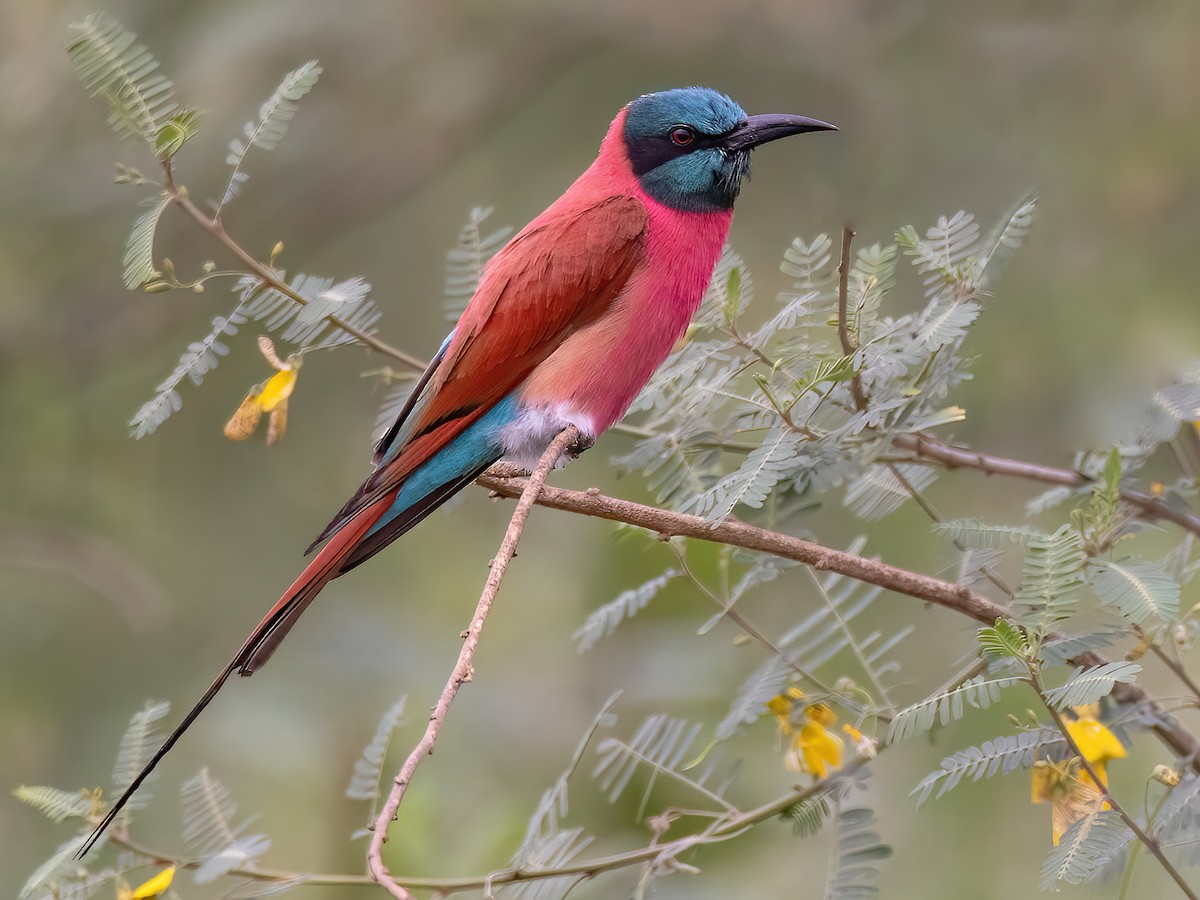Let me introduce you to the stunning Northern Carmine Bee-eater, a bird with beautiful and vibrant feathers that are equally impressive in both males and females. This avian species is truly a sight to behold!

The Northern Carmine Bee-eater, also called Merops nubicus or M. n. nubicus, is a visually stunning bird that can be found in Africa. Among the Meropidae family, it is known for its vibrant appearance and is considered one of the most attractive birds in its group.

The striking crimson feathers of this bird are a well-known feature, paired with a head and throat that shimmer in shades of green and blue. A bold black mask adds to their unique appearance. Their sleek bodies, bright red eyes, and pointed black beaks give them the ability to easily land on high perches, aided by their sharp talons.

Although there could be slight differences in their eye color, the appearance of male and female Northern Carmine Bee-eaters is quite similar. They share many physical characteristics that make them almost identical. The only noticeable dissimilarity is that male bee-eaters have slightly longer tail-streamers than the females, which is not a significant distinctive trait.

The Northern Carmine Bee-eater is a bird species that can be found in central and northern Africa, including countries such as Benin, Cameroon, and the Central African Republic. Their favorite food is bees, but they are not restricted to them and have been observed catching other flying insects like ants, grasshoppers, and locusts. These birds often sit on branches, carefully scanning the skies for any passing insects that they can quickly catch while still in mid-air.

These birds are famous for their wide and flat tunnels that can be as long as eight feet. They usually build these burrows on cliffs or near rivers. The female bird can lay up to five eggs in one brood, and both parents take turns incubating the eggs and taking care of the chicks. The young ones grow up pretty quickly, taking only 21 to 32 days to reach almost full maturity. During this time, the mother and father work hard to feed them until they can hunt on their own.

The Northern Carmine Bee-eater’s population is not facing a threat of decrease as they inhabit a large area in central and northern Africa. They are adored by bird lovers and serve as evidence of the wide range of bird species found in Africa.
